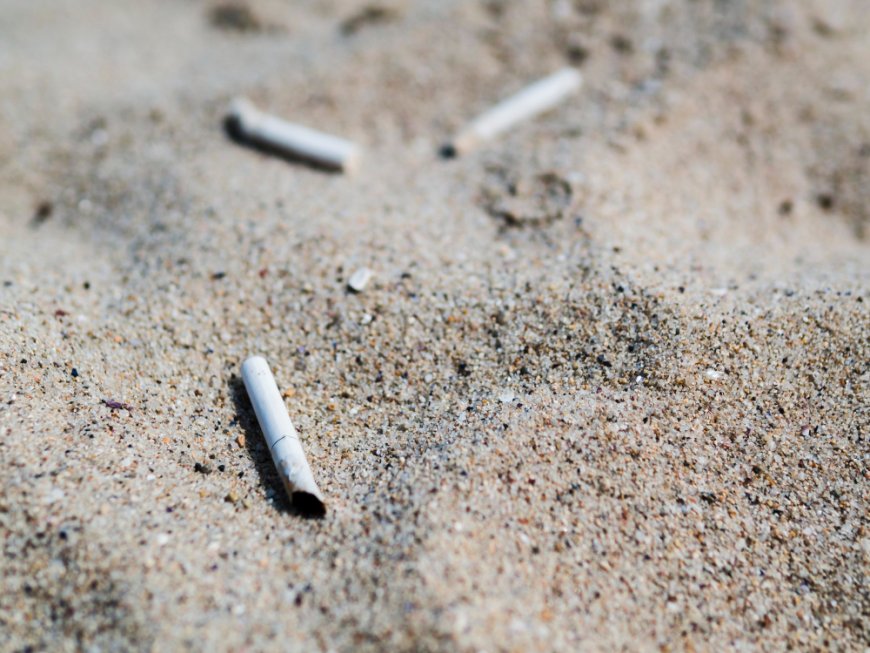Environmental Effects of Cigarette Litter: A Hidden but Growing Concern
For individuals struggling with tobacco dependence, seeking help from a professional Nasha Mukti Kendra in Patiala can be the first step toward not only personal healing but also a cleaner, healthier environment for all.

When we think of smoking, most people immediately associate it with health hazards like lung disease, heart problems, and cancer. While these issues rightly deserve attention, there's another critical dimension often overlookedthe environmental impact of cigarette litter. Each year, billions of cigarette butts are improperly discarded, creating one of the most common forms of pollution worldwide.
In this blog, we'll explore how cigarette litter affects our environment, why it's a problem that deserves more public awareness, and how community initiatives and rehabilitation centers such as a Nasha Mukti Kendra in Patiala can contribute to reducing tobacco use and, consequently, environmental harm.
The Scale of the Problem: What Is Cigarette Litter?
Cigarette litter refers to the improper disposal of used cigarettes, most commonly the filter (butt) that remains after smoking. Although small in size, these filters are often tossed on sidewalks, roads, beaches, and parks without a second thought.
According to studies conducted by environmental organizations, over 4.5 trillion cigarette butts are littered annually around the globe. That makes cigarette butts the most littered item in the worldeven more than plastic bags or food wrappers.
Why Are Cigarette Butts Harmful?
Many people assume cigarette butts are biodegradable, but thats far from the truth. These filters are made of cellulose acetate, a form of plastic that can take up to 10 years to decompose. During this time, the butts leach toxic chemicals into the soil and water, posing a significant risk to ecosystems.
Environmental Consequences of Cigarette Litter
1. Soil Contamination
When cigarette butts are thrown on the ground, they eventually break down and release a toxic mix of substances, including:
-
Nicotine
-
Arsenic
-
Lead
-
Formaldehyde
-
Cadmium
These chemicals seep into the soil and disturb the natural balance of nutrients, making it harder for plants to grow. Over time, this contamination can also affect food production in agricultural zones.
2. Water Pollution
One of the most dangerous aspects of cigarette litter is its impact on aquatic ecosystems. Rainwater washes cigarette butts into storm drains, which lead directly to rivers, lakes, and oceans. Just one cigarette butt can contaminate up to 1,000 liters of water with toxic substances.
Fish, turtles, and other marine life often mistake cigarette butts for food. Ingesting even a small amount can lead to poisoning, organ damage, or death.
3. Harm to Wildlife
Birds, small mammals, and insects also suffer from the widespread presence of cigarette litter. Animals may ingest or come into contact with the filters, leading to internal blockages, poisoning, or even death. The residual tobacco found in discarded butts is still toxic to most animals, particularly young ones.
4. Increased Fire Risk
Improperly discarded cigarettes are one of the leading causes of man-made wildfires. During dry seasons, a single smoldering butt can ignite dry grass or leaves, leading to devastating fires that threaten forests, property, and human lives.
In urban settings, cigarette butts can also cause fires in garbage bins or near flammable materials.
Economic Impact of Cigarette Litter
The environmental damage caused by cigarette litter also translates into economic costs for municipalities. Cleaning up cigarette waste from streets, parks, and public spaces costs cities millions of dollars annually. These funds could be redirected toward community development, education, or healthcare if cigarette litter were significantly reduced.
Tourism can also suffer. Litter-strewn beaches, parks, and landmarks discourage tourists, affecting local businesses and employment.
Public Health Connection: Smoking and Pollution
Beyond its environmental impact, cigarette litter reflects the broader societal issue of tobacco addiction. Reducing cigarette waste isn't just about cleaner streetsit's about addressing the root cause: smoking itself.
This is where awareness programs, policy changes, and rehabilitation services like a Nasha Mukti Kendra in Patiala play a crucial role. These centers help individuals overcome tobacco dependence, ultimately contributing to a decline in cigarette consumption and littering.
How Can We Reduce Cigarette Litter?
1. Public Awareness Campaigns
Educational campaigns that highlight the environmental dangers of cigarette butts can motivate people to dispose of them properly. Many smokers are unaware that filters are plastic-based and harmful to nature.
Clear signage, public service announcements, and social media can all play a role in shifting behavior.
2. Installation of Proper Disposal Units
Cities can install more ashtrays, designated smoking zones, and cigarette butt receptacles in public areas. These make it easier for smokers to dispose of their butts responsibly.
Some innovative solutions include eco-friendly ashtrays that recycle butts into construction materials or compost.
3. Stricter Legislation and Fines
Implementing fines for littering cigarette butts can act as a deterrent. Similar to how plastic bans gained momentum, governments can regulate tobacco litter through environmental laws.
4. Promoting Smoking Cessation
Ultimately, one of the most effective ways to reduce cigarette litter is to reduce smoking altogether. Organizations and treatment facilities such as a Nasha Mukti Kendra in Patiala provide structured programs for individuals who want to quit smoking.
With personalized counseling, detox support, and behavioral therapy, these centers guide people toward a tobacco-free lifebenefiting both public health and the environment.
The Role of Nasha Mukti Kendras in Environmental Wellness
While the primary goal of a Nasha Mukti Kendra in Patiala is to help individuals break free from addiction, their impact goes much further. By reducing tobacco use in communities, these centers indirectly contribute to:
-
Lower environmental pollution
-
Healthier urban and rural landscapes
-
Reduced fire risks
-
Clean and safe public spaces
As more people choose to quit smoking through such facilities, the cumulative benefit to the environment is significant. This is why rehabilitation efforts should be seen not only as a public health necessity but also as an environmental imperative.
Conclusion
Cigarette litter may seem like a minor issue compared to other global environmental challenges, but its impact is profound and far-reaching. From polluting waterways to harming wildlife and increasing fire risks, cigarette butts represent a form of pollution that deserves more attention.
Addressing this problem requires a multi-pronged approachawareness, infrastructure, policy, and behavioral change. Most importantly, it requires reducing tobacco consumption itself.



































